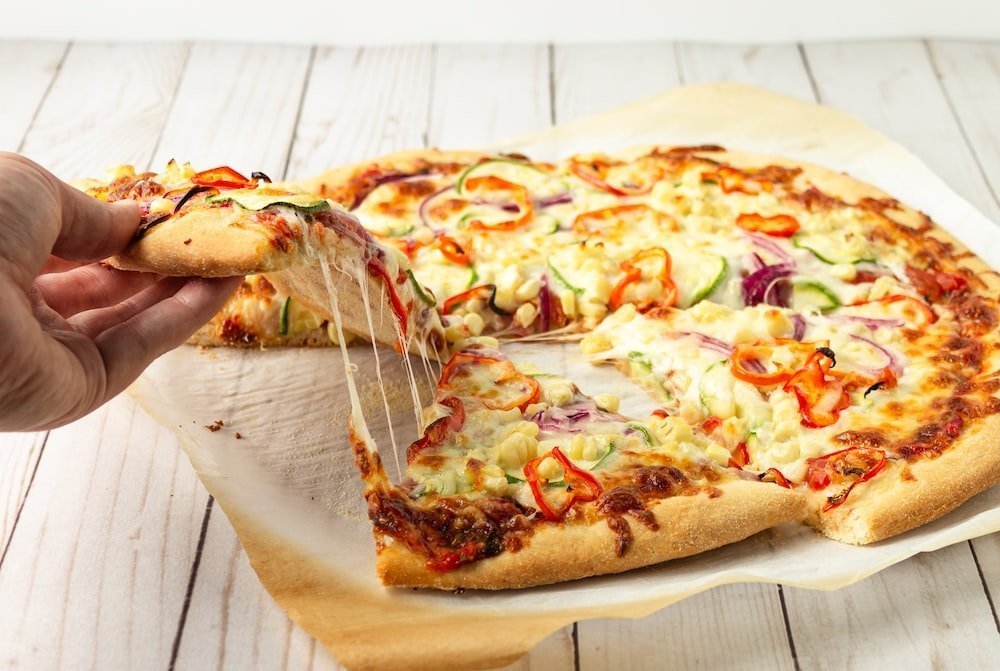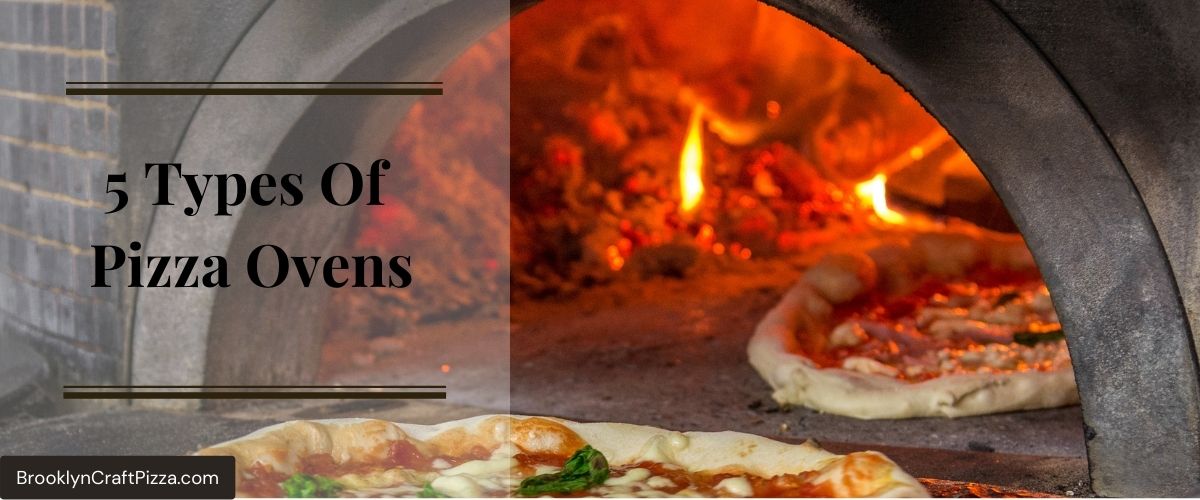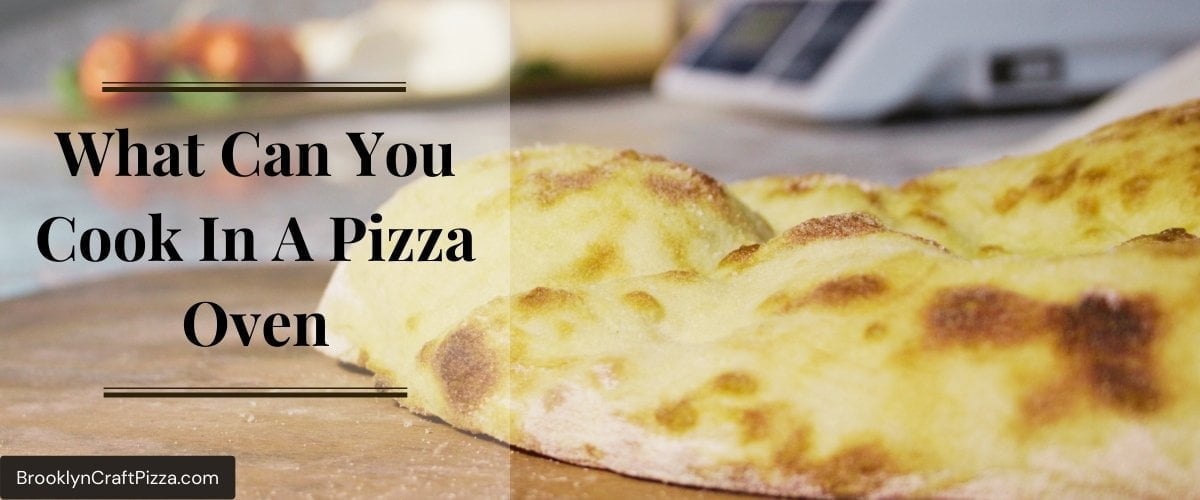If you have baked homemade pizza, you have probably encountered a few unwelcome hiccups. One of these mistakes often includes a wet crust, especially in the middle. Read this article to learn what to do with Ooni pizza not cooked middle and how to solve it.
Let’s get started!
Why Does Ooni Pizza Often Not Cook in the Middle?
If you find that your pizzas are not cooking well in the middle, one of the main reasons could be that you might be putting the pizza dough far too inside the oven. Other reasons include the following:
1. Use of Thick Dough
The dough ball is overly too thick most of the time. It is often a result of insufficient threading of the dough to a large enough size.
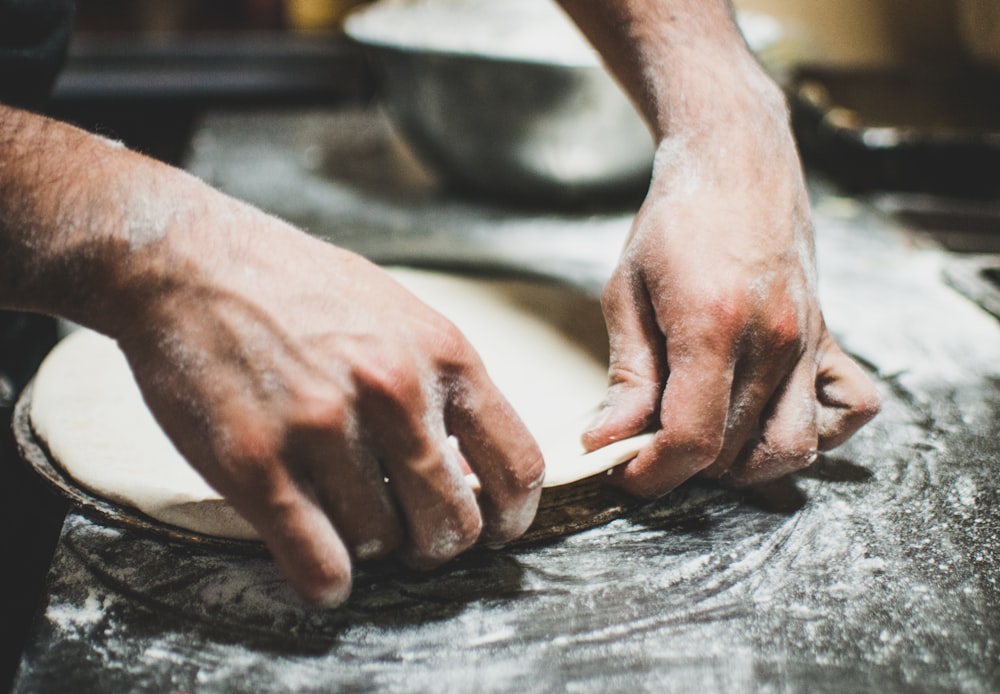
The middle of the pie cannot be baked because the crust is too thick for the oven’s heat to reach all of the dough.
As a result, your pizza comes out with an undercooked base. If you continue to cook a thick dough, your pizza will have a scorched crust. Your taste senses will not appreciate this.
2. Failure to Preheat the Oven
If the oven is not preheated before the dough ball is placed, the crust will probably burn before the interior is baked.
3. There Isn’t Enough Heat in the Oven
Sometimes it may be the case that the oven is not hot enough to cook the dough ball completely.
4. The Pizza Is Topped Excessively
Overtopping the pizza is another factor that contributes to its incomplete cooking.
It typically manifests as an overabundance of cheese, tomato sauce, or anything else.
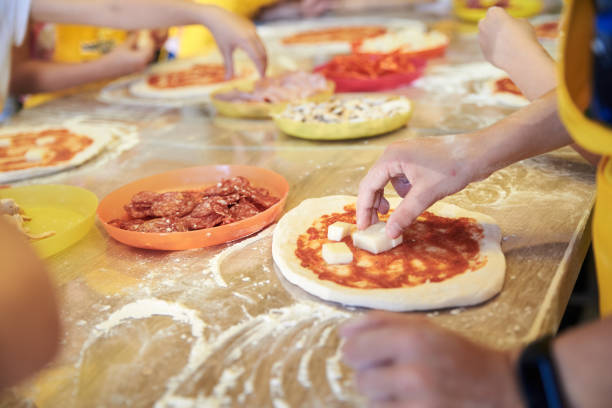
The evaporation of the liquid inside the pizza is the mechanism through which it becomes crispy.
If the topmost layer is too thick, part of the water becomes trapped underneath it later, hindering the dough ball’s cooking ability.
5. If the Baking Period Is Too Brief
Typically, the goal when making pizza crust is to bake at a higher temperature for a shorter baking time.
The goal shouldn’t be to bake for longer. However, it does not imply that the cooking time should be cut short to the point that the center is raw or undercooked.
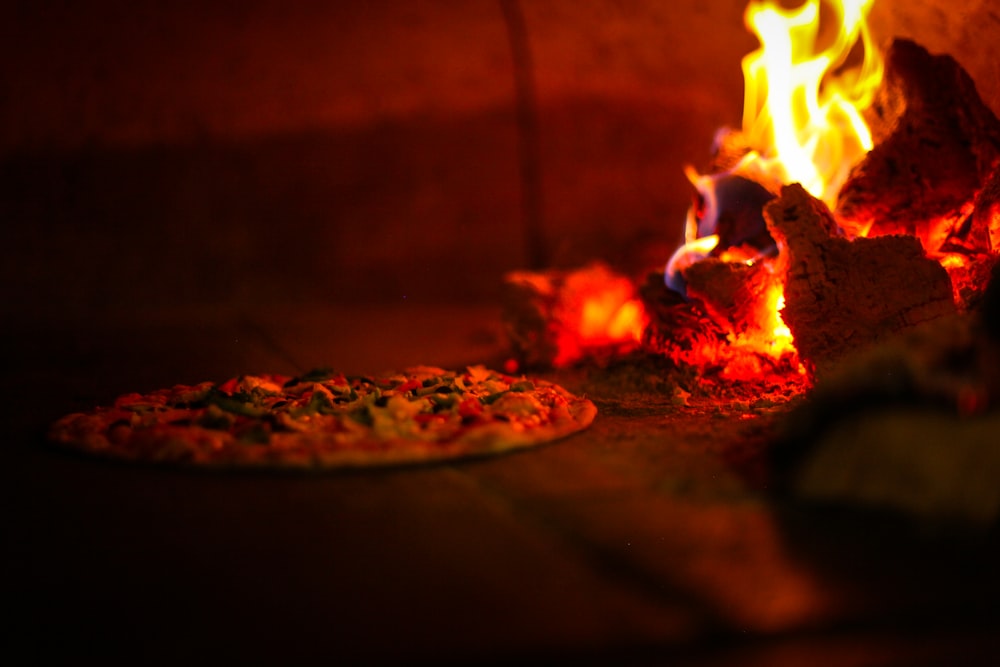
If the baking time is too short, the pizza crust won’t come out burnt and crispy as you want it to.
Cause of Sogginess to Your Ooni Pizza
There are several causes for your Ooni Pizza to be soggy, just like an undercooked pizza in the center.
Watery pizza sauce, baking without a pizza stone, too many toppings, not enough time in the oven, and many other factors are some of these causes.

The issue of baking a wet pizza crust occurs frequently. Everyone attempting to cook homemade pizza runs across this at some point, especially novices.
The reasons for an undercooked or uncooked center are often intertwined.
These reasons include the following;
- Using fresh mozzarella as it contains a lot more water. After baking it, you will get a sloppy, wet pizza base and topping.
- You did not sufficiently bake your dough since you removed it too soon.
- You probably did not use a pizza stone or steel for cooking it: The base cooks more quickly when a pizza stone or steel is used than when it isn’t.Pizza steel ensures that the dough bakes faster than usual by transferring heat from the oven to the base of the dough more quickly. If it isn’t utilized, the pizza crust will most likely be undercooked when you remove it, leaving it mushy.
- You used too much sauce. Unfortunately, the source prevents the dough ball from fully drying out, resulting in a soggy pizza crust that doesn’t satisfy you as much as it should have.
- There were too many toppings. If your toppings contain too much water, they will leak into the dough, making it difficult to get dry and crispy.
- You unnecessarily allowed the sauce to remain on the base.
- The base of the pizza dough was far too thick; this prevented heat from below from properly transferring to the toppings.
- As a result, the pizza will be moist and sloppy.
Why Is The Middle Of My Pizza Wet?
A wet pizza in the middle, often known as a soggy pizza, has not fully cooked through.
Therefore, the same factors that cause a soggy pizza also cause the center of your pizza to be wet. They consist of the following:
- Making sauce with plenty of water.
- Adding excessive garnishes.
- Using dripping mozzarella.
- Low-temperature use.
- An off-oven.
How Can I Avoid Wet, Soggy, and Uncooked Pizza?
Pizza eaten raw is not at all healthy, particularly since the dough needs to be thoroughly baked at a high temperature to prevent food poisoning caused by germs in the raw flour.
Additionally, the flavor is far less pleasing than a pizza baked properly.
The best solutions for undercooked, wet, and soggy pizza are listed below to help alleviate this:
a) Utilize Less Toppers
There is no such thing as too many pizza toppings.
While many believe adding more toppings would improve the taste, they degrade the pizza’s quality when they become excessive.
b) Shorter Baking Time at Higher Temperatures
The baking temperature within the oven and the baking time are directly related. The speed of baking increases with increasing baking temperature. Therefore, the pizza dough will bake in the oven for a shorter period.

The key to a crispy, dry pizza is to cook your pizza in a hot oven at a high temperature. In this manner, the center of the pizza comes out light and soft, and the crust is properly baked, providing a delicious taste. But, of course, the perfect way to bake pizzas is with the top being cooked by radiated, reflected heat from the top.
Getting in contact with a hot surface bakes the base. All of these heat interactions interact with one another to provide you with the perfect pizza.
c) Use a Baking Stone or Steel for Baking
In contrast to the typical baking sheet, we advise you to utilize baking steel or stone to achieve the finest baking results. Simply using baking sheets won’t produce the greatest results since the temperature isn’t high enough.
In addition, it takes longer to bake the pizza foundation since the baking sheet must first warm up in the oven, which does not produce the greatest results.
Additionally, the sheets don’t hold heat since they are typically thin metal sheets. Therefore, you must know how to preheat your pizza stone or steel to avoid undercooked pizza.
They ensure quick baking by retaining and transferring heat to the pizza base.
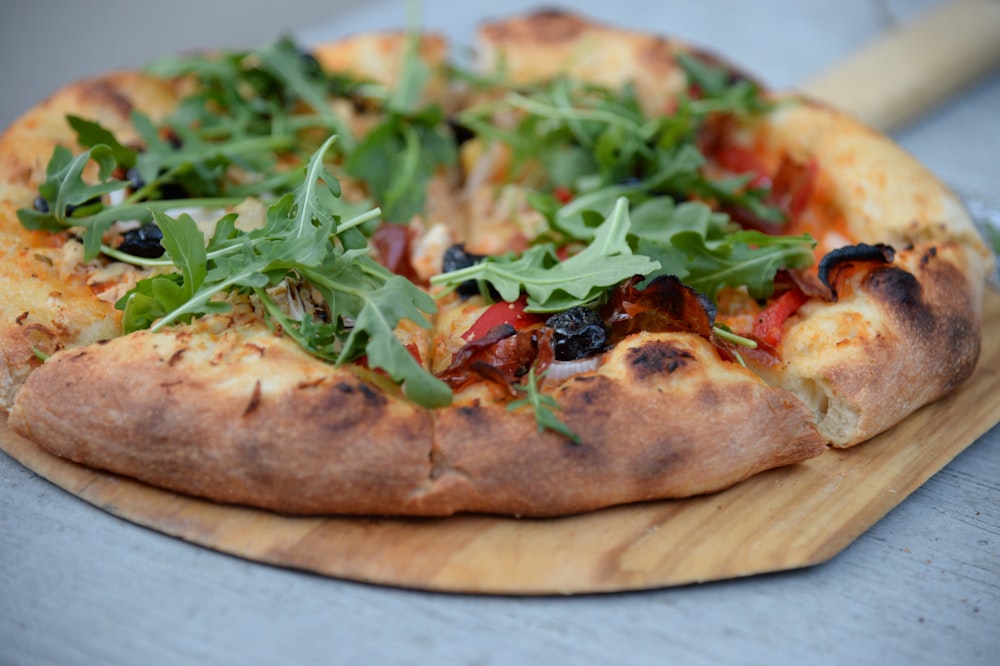
d) Get Your Ooni Oven Ready
It’s important to preheat your oven before you start baking and placing your pizza dough inside.
For the baking stone or baking steel to get hot enough, you will need to turn on the oven and keep it on for around 15 to 20 minutes. It should be at the maximum setting, or around 500°F. You may put the baking dough in the oven after the baking steel or stone is heated enough.
Make sure to reduce the baking temperature to its lowest setting before putting the dough in the oven. However, a thermometer is required to gauge the temperature of the Ooni pizza oven. Doing this may prevent burning the dough’s top before the bottom is thoroughly baked.
Keep the heat low as soon as the pizza is in the oven. Before placing the second pizza in, ensure you raise the temperature to be high after removing the cooked one. It will enable the baking stone to heat up adequately between baking sessions.
You should rotate your pizza in the oven every 10 to 15 seconds until it is fully cooked.
e) Properly Knead the Dough
It would be best if you watched the dough during kneading to make sure it doesn’t weigh too much or is too thick.
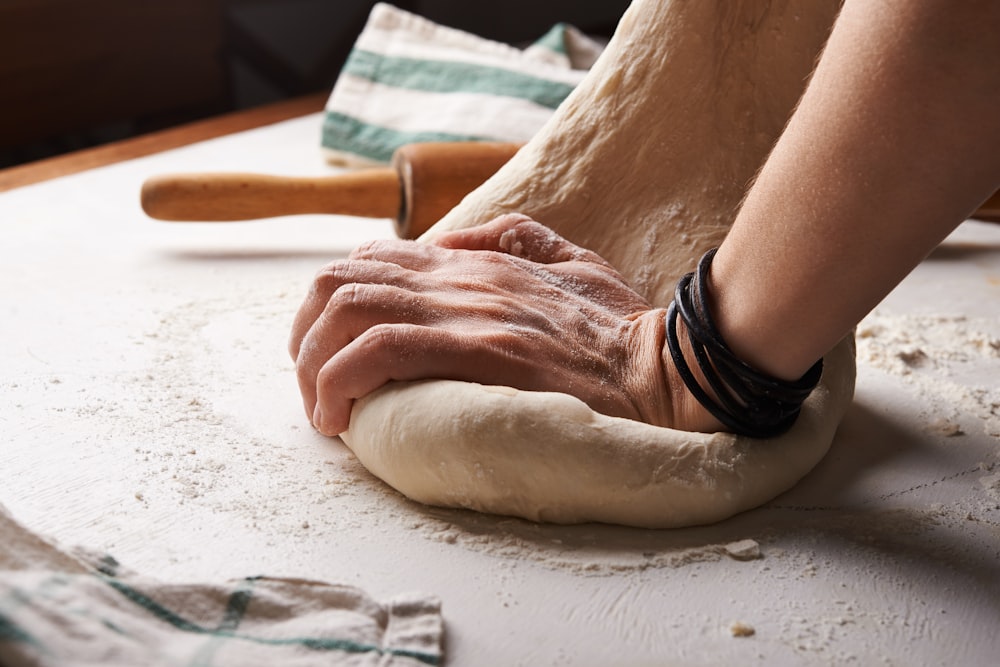
As a general rule, we advise you to roll your pie to a weight of 200 grams and a size of around 10-15 inches. The dough cooks more quickly and easily with a thin layer.
How can I tell whether my pizza is spread out thin enough?
If you don’t know how to make elastic stretchy pizza dough, you may need experience, but we can offer you some ideas to get you started. First, stretch out your pizza dough until it is transparent. It makes it easy to see whether your dough has been spread out evenly.
You should be able to spread your pizza so thin that light can travel through it as you hold it up to the light. You may spread the pizza out if there are any spots on it where light doesn’t get through.
You may stretch your pizza in various ways, and there is no right way to do it. However, the quality of your dough is the most crucial component in achieving a thin pizza. If the quality of your dough is poor, it will rip before it becomes thin enough.
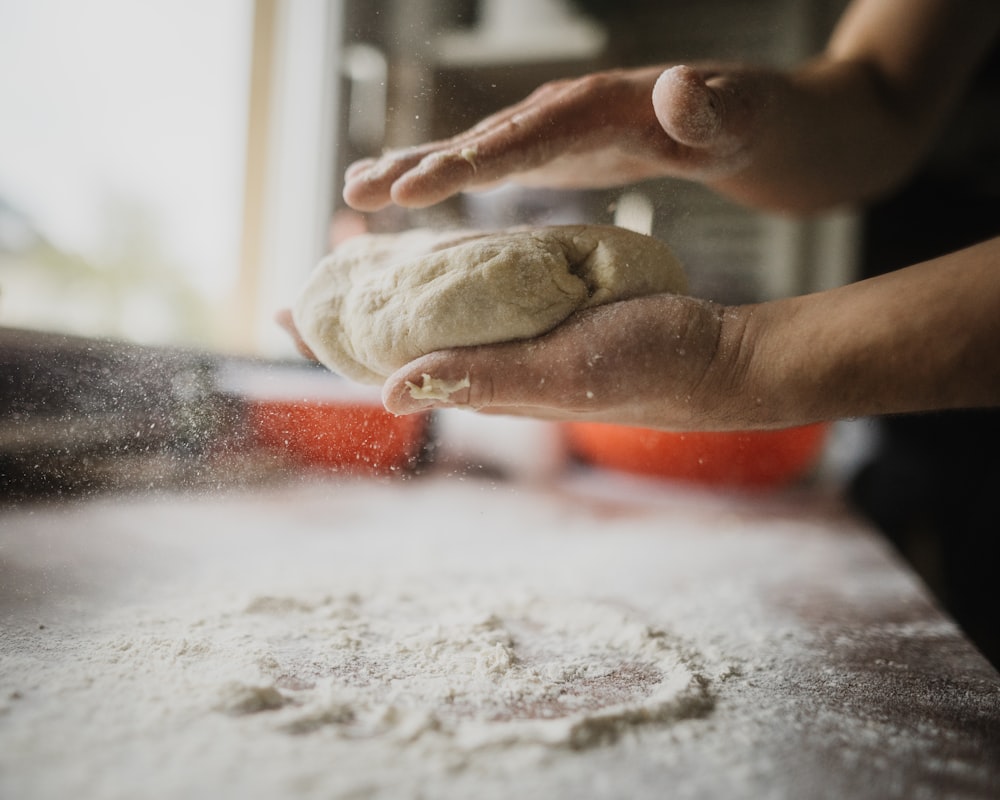
If you have experience making dough, you might want to start with a more traditional Neapolitan recipe. It takes some practice, but it’s not as tough as you imagine to produce dough of this quality.
The Neapolitan-style pizza should strive to have the following two qualities:
- Robust dough (good gluten development)
- Supple dough (elasticity or extensibility)
If we can accomplish these two goals, we can be quite certain that our dough will be able to spread out fairly thin, aiding in appropriate cooking.
f) Warming Up Your Pizza
Although it will work, reheating pizza in the microwave risks making the food mushy. You will need to adjust the microwave’s temperature to make sure it isn’t set too high to avoid this problem.

Place a piece of paper below the pizza since it will absorb moisture and steam drip out of the base. The best results will be obtained by cooking the pizza in the oven.
To maintain the crispy texture, preheat your oven before putting the pizza in the pan, just as you would when cooking the pizza normally.
Frequently Asked Questions
1. How can you know when pizza dough is done?
The best route is along the base. Carefully lift and inspect it; if it appears properly browned, it is finished.
We recommend you add additional time to avoid making a white pizza.
2. How can You Avoid Uncooked, Soggy Pizza?
Pizza that has not been cooked is by no means healthy. Particularly when the dough is not thoroughly cooked at a high temperature. Bacteria in the raw flour will grow, resulting in food poisoning. In addition, the flavor is noticeably inferior to that of a well-prepared pizza.
Here are the best solutions to help reduce instances of undercooked, wet, and soggy pizza:
A) Use Less Topping
While many believe adding more toppings would improve the taste, they degrade the pizza’s quality when they become excessive.
b) Shorter Baking Time at Higher Temperatures
The baking temperature within the oven and the baking time are directly related. Baking proceeds more quickly the higher the temperature is. As a result, the pizza dough will bake in the oven for shorter periods.
The key to a crispy, dry pizza is to bake it in a hot oven at a high temperature. In this manner, the center of the pizza is light and soft, and the crust is properly baked, providing a delicious taste. The perfect way to bake pizzas is with the top cooked by radiated, reflected heat from the ceiling.
By coming into touch with a heated surface, the base gets baked. Finally, the finest outcomes are produced by interacting all these heat processes.
c) Use a baking stone or steel
In contrast to the typical baking sheet, We advise utilizing baking steel or stone to achieve the finest baking results. Simply using baking sheets won’t produce the greatest results since the temperature isn’t high enough.
It takes longer to bake the pizza foundation since the baking sheet must first warm up in the oven, which does not produce the greatest results.
Additionally, the sheets don’t hold heat since they are typically thin metal sheets. As a result, you frequently get undercooked pizza. However, this issue is resolved using pizza steel or stone. They ensure quick baking by retaining and transferring heat to the pizza base.
d) Preheat your Ooni Oven
It’s important to preheat your oven before you start baking and placing your pizza dough inside. You need to turn on the oven and keep it on for around 15 to 20 minutes for the baking stone or baking steel to get hot enough.
It should be at the maximum setting, or around 500°F. You may put the baking dough in the oven after the baking steel or stone is heated enough.
Before putting the dough in the oven, reduce the baking temperature. Nonetheless, a thermometer is required to gauge the temperature of the Ooni pizza oven. Doing this prevents you from burning the dough’s top before the bottom is thoroughly baked.
Keep the heat low as soon as the pizza is in the oven. Before placing the second pizza in, ensure you raise the temperature to be high after removing the cooked one. This will enable the baking stone to heat up adequately between baking sessions. You should rotate your pizza in the oven every 10 to 15 seconds until it is fully cooked.
3. Is eating pizza dough that isn’t fully baked bad?
Although pizza dough doesn’t include raw eggs, it contains wheat and yeast, which can contain germs and negatively impact your health.
It’s best to cook it, and fixing it won’t take long.
4. Can I subsequently cure the undercooked pizza?
You can, indeed. Turn on the oven to 350°F (175°C) and cook for 5–6 minutes; frequently monitor your toppings to avoid burning.

Image Credits: Ooni.com
Conclusion
Pizzas with uncooked centers might flip over when made at home, especially for beginners.
Most of the time, the issue is manageable, and if you attentively read this text, you would have discovered what you were doing incorrectly.
Now all you have to do is implement the advice we’ve given, and soggy pizza will soon be a thing of the past.

